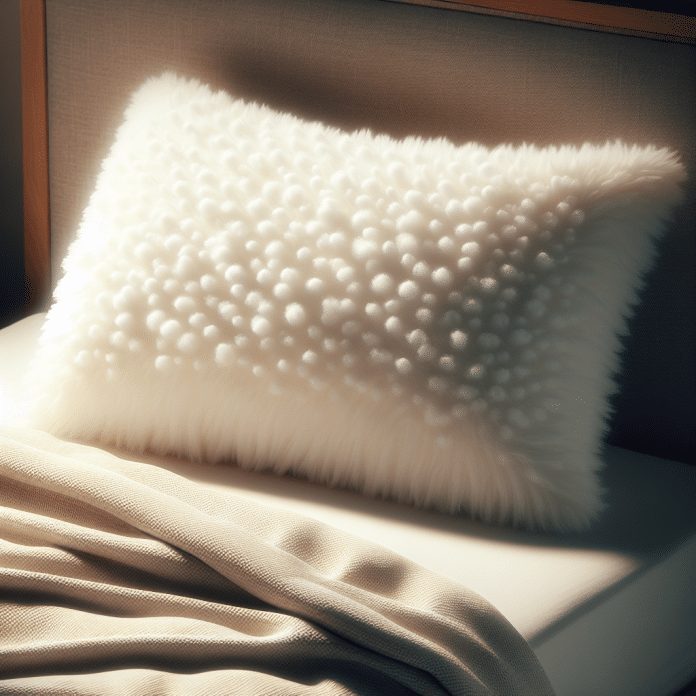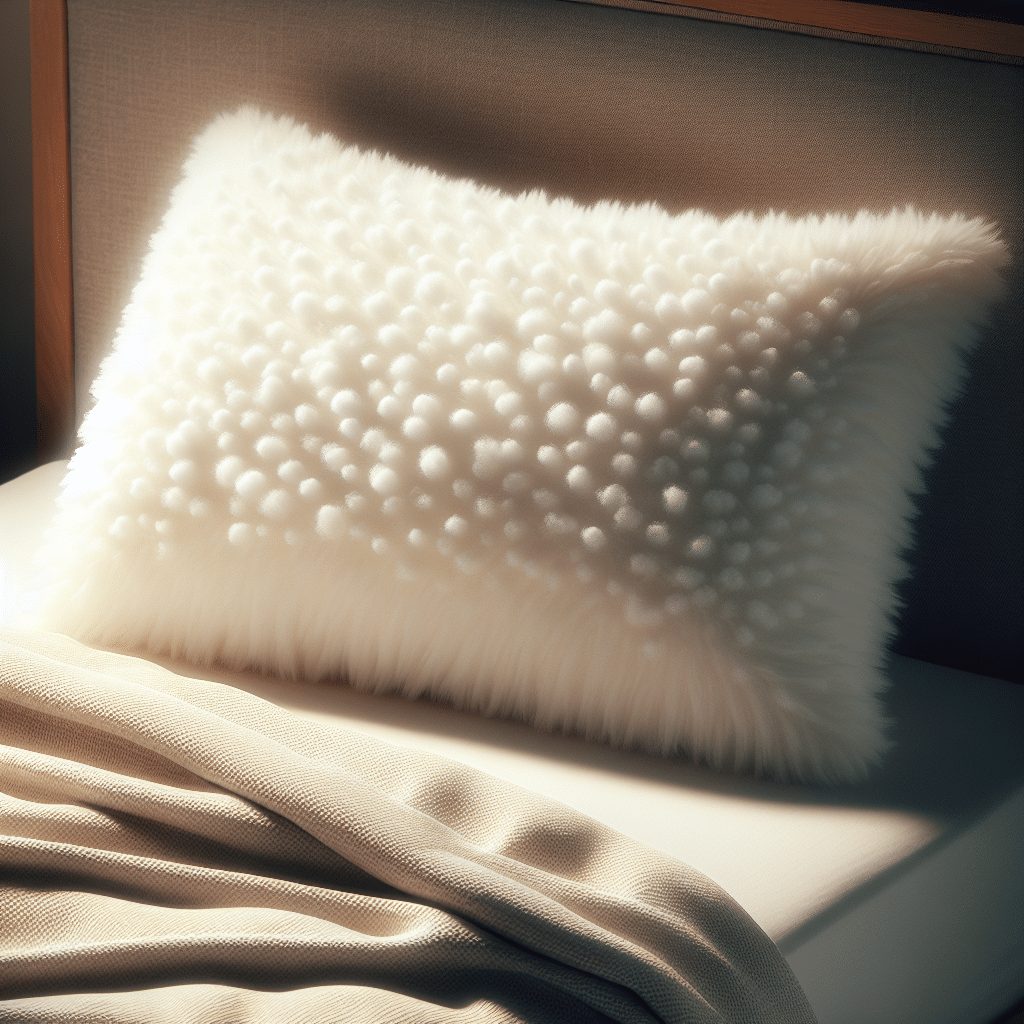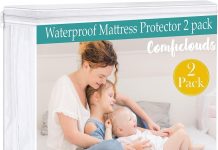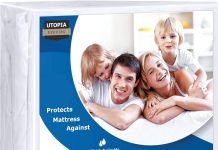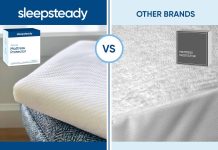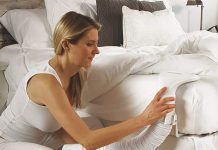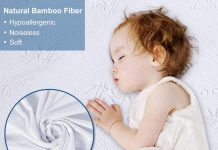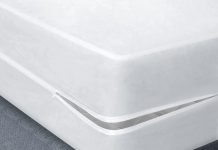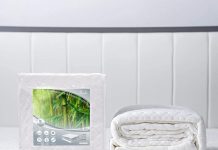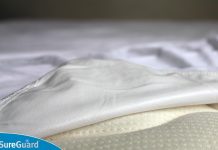In our quest for a peaceful night’s sleep, we all know that the dreaded crinkle of a mattress protector can be an unwelcome distraction. But fear not, for today we shall uncover the secrets to making that bothersome crinkle disappear, transforming your restless nights into a serene slumber. With simple and ingenious solutions at hand, you’ll soon bid adieu to the dissonant symphony of a crinkly mattress protector, and embrace the blissful silence that awaits. So let’s get started on this quest to reclaim our peaceful oasis!
Review contents
Choosing the Right Material
Opt for cotton or microfiber
When looking for a mattress protector that is quiet and comfortable, it’s essential to choose the right material. Cotton and microfiber are excellent options to consider. Cotton is known for its breathability and softness, making it a popular choice among many sleepers. Microfiber, on the other hand, offers a smooth and silky feel and is known for its durability. Both materials have noise-reducing properties, helping to minimize any crinkling sound that might occur while you’re sleeping.
Look for noise-reducing technologies
In addition to selecting the right material, it’s also worth looking for mattress protectors that come with noise-reducing technologies. Many manufacturers now integrate innovative features into their products to ensure a quiet sleep experience. These technologies can include specialized fabrics or coatings that dampen sound, providing you with a peaceful and undisturbed night’s sleep.
Consider a quilted mattress protector
Another option to consider is a quilted mattress protector. Quilting involves layering fabrics together, creating a thicker and more padded surface. This extra padding not only adds a layer of comfort but also helps to reduce noise. The quilting process helps to distribute weight more evenly and reduce the crinkling sound that thinner protectors may produce.
Pre-Washing and Softening Techniques
Pre-wash the mattress protector
Before using your mattress protector, it’s a good idea to pre-wash it. This step helps to remove any leftover manufacturing residues and softens the fabric. Pre-washing also allows the protector to shrink to its intended size, ensuring a better fit on your mattress. Follow the manufacturer’s instructions for washing, including water temperature and detergent recommendations. Once washed, dry the protector fully before putting it on your bed.
Use fabric softener
To further soften your mattress protector and minimize any noise it may produce, try using fabric softener during the washing process. Fabric softeners work by coating the fibers of the fabric, making them feel smoother and reducing friction. This can help prevent the crinkling sound that can occur when you move around on your bed.
Add vinegar during the wash
Another technique to soften your mattress protector and reduce noise is to add vinegar to the wash cycle. Vinegar helps to break down any residue or buildup on the fabric and can make it feel softer. Add about half a cup of distilled white vinegar to the washing machine along with your detergent. The vinegar smell will dissipate once the protector is dry.
Opt for dryer balls
Using dryer balls when drying your mattress protector can also help to soften the fabric and reduce noise. Dryer balls are typically made of rubber or fabric and work by agitating the laundry during the drying process, helping to fluff up the fibers. This can result in a softer and quieter mattress protector. Simply toss the dryer balls into the dryer along with the protector for maximum effectiveness.
Silencing Techniques
Use a mattress topper or pad
If you’re still experiencing noise issues with your mattress protector, consider adding a mattress topper or pad on top. These additional layers not only provide extra comfort but also act as a buffer between you and the protector, helping to muffle any crinkling sounds. Look for a topper or pad made from a noise-reducing material, such as memory foam or latex, to further enhance the silencing effect.
Place a fitted sheet over the protector
Another simple yet effective technique is to place a fitted sheet over the mattress protector. The fitted sheet serves as another barrier between you and the protector, reducing any noise that may be generated. Ensure that the sheet fits snugly over the protector without any wrinkles or loose areas. This will help to create a smoother and quieter surface for a better night’s sleep.
Secure the edges of the protector
Sometimes, the noise produced by a mattress protector comes from the edges or corners, where the protector may not be tightly secured to the mattress. To address this issue, make sure to properly secure the edges of the protector. Check for any loose or hanging areas and tuck them firmly under the mattress. This will minimize any movement and friction, reducing the likelihood of noise.
Try using rug grippers
If securing the edges of the protector doesn’t solve the noise problem, consider using rug grippers. These adhesive pads are originally designed to keep rugs in place, but they can also be used to secure the corners of your mattress protector. Simply attach them to the underside of the mattress corners, and they will provide extra grip, preventing the protector from shifting and causing noise.
Adjustment and Positioning
Properly adjust and stretch the protector
When first installing your mattress protector, it’s important to properly adjust and stretch it on the mattress. This will help ensure a smoother surface and minimize any crinkling sounds. Start by aligning the edges of the protector with the edges of your mattress. Then, gently pull and smooth out any wrinkles or creases, making sure the protector lies flat and taut against the bed.
Ensure a snug fit on the mattress
To achieve the quietest sleep environment, it’s crucial to choose a mattress protector that fits your mattress perfectly. If the protector is too loose or too small, it may move around and create noise when you move during the night. Measure your mattress carefully and refer to the manufacturer’s sizing guide to select the appropriate size. A snug fit will help keep the protector in place and minimize any potential noise.
Choose an appropriate size
In addition to ensuring a snug fit, it’s essential to choose the right size of mattress protector for your bed. Some protectors are designed to cover the full mattress, while others are designed to fit only the top surface. Consider the size and depth of your mattress when selecting a protector. If your mattress is particularly thick, opt for a deep-pocket protector to accommodate its size and prevent any unnecessary noise.
Maintenance and Care
Regularly wash and clean the protector
To keep your mattress protector quiet and in good condition, it’s important to regularly wash and clean it. Follow the manufacturer’s instructions for the recommended washing frequency and care instructions. Regular washing helps remove any dirt, oils, or allergens that may accumulate on the surface, contributing to noise or discomfort. It also helps to maintain the integrity of the protector and prolong its lifespan.
Follow manufacturer’s instructions
Each mattress protector is unique, so it’s essential to closely follow the manufacturer’s instructions when it comes to washing and caring for your specific product. The manufacturer will provide guidance on water temperature, detergent type, and any special care requirements. By following these instructions, you can ensure that your protector remains in good condition and performs optimally, providing you with a quiet and comfortable sleep environment.
Avoid harsh detergents and bleaching agents
When washing your mattress protector, it’s best to avoid using harsh detergents or bleaching agents. These substances can potentially damage the fabric and affect its noise-reducing properties. Instead, opt for mild, non-abrasive detergents specifically formulated for sensitive fabrics. Avoid using bleach or any other strong cleaning chemicals, as they can break down the fabric and compromise its effectiveness.
Spot clean any spills or stains promptly
In addition to regular washing, it’s crucial to spot clean any spills or stains on your mattress protector promptly. Blot the affected area with a clean cloth or sponge and a mild detergent solution. Avoid rubbing or scrubbing, as this can spread the stain or cause it to set further into the fabric. Prompt and gentle spot cleaning will help maintain the cleanliness and appearance of your protector while minimizing any potential noise.
Other Soundproofing Methods
Use white noise machines or fans
If you’re looking to create a quieter sleep environment overall, consider using white noise machines or fans. These devices produce a constant background noise that can help mask any sounds, including those produced by a crinkly mattress protector. The white noise provides a consistent and soothing sound that can help you relax and sleep more soundly. Experiment with different volume levels to find the optimal setting for your needs.
Enhance the overall sleep environment
Creating a calming and peaceful sleep environment can also contribute to a quieter overall experience. Consider using blackout curtains to block out any external noise and light that may disturb your sleep. Invest in a comfortable mattress and pillows that support your body and minimize movement during the night. Choose soft and breathable bedding materials that won’t generate additional noise. By optimizing your sleep environment, you can enhance your sleep quality and reduce any potential disruptions.
Consider acoustic panels or soundproof curtains
For those experiencing significant noise issues, incorporating acoustic panels or soundproof curtains into your bedroom can help dampen external sounds. Acoustic panels are designed to absorb sound waves, reducing echoes and reverberations in a room. Soundproof curtains, on the other hand, are typically made with heavy and dense materials that block sound from entering or leaving the space. By addressing external noise sources, you can create a more peaceful and intimate sleep environment.
Seeking Professional Help
Consult with a mattress specialist
If you’ve tried various techniques and are still struggling to quiet your mattress protector, it may be beneficial to consult with a mattress specialist. These professionals have in-depth knowledge about mattresses, protectors, and sleep accessories. They can provide personalized recommendations based on your specific needs and preferences. A mattress specialist can guide you towards finding the right mattress protector or suggest alternative solutions to ensure a peaceful night’s sleep.
Get advice from a sleep consultant
Another option for seeking professional help is to consult with a sleep consultant. Sleep consultants specialize in assessing and improving sleep quality and can offer valuable insights into minimizing noise disruptions. They can help identify any underlying sleep issues or habits that may contribute to your discomfort. With their expertise, they can create a comprehensive sleep plan tailored to your needs, including recommendations on the best mattress protectors and soundproofing techniques.
Explore noise reduction techniques used in the hospitality industry
The hospitality industry places a strong emphasis on creating a quiet and relaxing sleep environment for guests. Exploring noise reduction techniques used in hotels and resorts can provide additional ideas for silencing your mattress protector. Hotels often use sound-absorbing materials, such as foam or fabric panels, on their walls or ceilings. They may also employ noise-blocking curtains or soundproofing door sweeps. By exploring these techniques, you can gain inspiration for implementing similar solutions in your own bedroom.
Personal Sleeping Habits
Experiment with pillow positioning
Your pillow positioning can affect the proximity of your ears to the mattress protector and potentially amplify any noise it produces. Experiment with different pillow heights and positions to find the most comfortable and noise-free alignment. For example, elevating your head slightly or using a larger pillow may create a buffer between your ears and the protector, reducing the noise impact.
Adopt a comfortable sleep posture
Your sleep posture can also impact the noise level experienced from a mattress protector. Some positions, such as sleeping on your side or stomach, may create more contact with the mattress and result in increased noise. Try adopting a back sleeping position or adjusting your body alignment slightly to minimize movement and friction against the protector. Finding a comfortable sleep posture can reduce disturbances and contribute to a quieter sleep environment.
Avoid sudden movements or adjustments
During sleep, we naturally shift positions and make occasional adjustments. However, sudden movements or frequent adjustments can increase the likelihood of generating noise from a mattress protector. Try to move and adjust slowly and deliberately to minimize any potential noise. Making gradual transitions and being mindful of your movements can help create a more peaceful sleep environment.
Potential Drawbacks
Heat retention with certain materials
While cotton and microfiber are generally breathable materials, it’s important to note that some mattress protectors may retain heat. This can be particularly problematic for sleepers who tend to sleep hot. When selecting a mattress protector, consider options that incorporate cooling technologies or have moisture-wicking properties to help regulate temperature and prevent overheating.
Reduced waterproofing capabilities
Some mattress protectors may prioritize noise reduction over waterproofing capabilities. If maintaining a high level of waterproofing is important to you, carefully read the product descriptions and customer reviews to ensure that the protector meets your needs. Look for protectors that offer a balance between noise reduction and waterproofing, or consider using an additional waterproof layer underneath the protector for added peace of mind.
Limited noise reduction effectiveness
It’s important to recognize that while various techniques and materials can help reduce noise, complete elimination of all sound may not be possible. Factors such as the type of fabric used, the construction of the protector, and individual sensitivity to noise can impact the overall noise reduction effectiveness. It’s essential to manage expectations and prioritize other aspects of your sleep environment to create a peaceful and restful night’s sleep.
Cost Considerations
Compare prices from different brands
When it comes to purchasing a mattress protector, comparing prices from different brands can help you find the best value for your budget. However, it’s important to note that higher-quality materials and innovative technologies may come at a higher cost. Consider the long-term benefits and durability of the protector when evaluating the price. Investing in a high-quality protector that meets your noise reduction needs can ultimately provide better sleep quality and value in the long run.
Evaluate durability and longevity
In addition to comparing prices, it’s crucial to evaluate the durability and longevity of the mattress protector. Look for protectors made from high-quality materials and constructed with sturdy seams and edges. Consider customer reviews and ratings to gauge the overall satisfaction and durability of the product. A durable protector will not only provide better noise reduction but also last longer, making it a worthwhile investment for your sleep environment.
Factor in warranty and return policies
Lastly, when considering the cost of a mattress protector, it’s essential to factor in the warranty and return policies offered by the manufacturer. A solid warranty demonstrates the confidence the manufacturer has in their product and can provide reassurance in case of any defects or issues. Additionally, a generous return policy allows you to try the protector risk-free and return it if it doesn’t meet your expectations. Considering these aspects can help you make a well-informed and cost-effective purchase decision.
Making a crinkly mattress protector quieter can greatly improve your sleep experience. By selecting the right material, pre-washing and softening the protector, using silencing techniques, adjusting and positioning it properly, and maintaining it correctly, you can minimize noise disruptions and enjoy a peaceful night’s sleep. Additionally, exploring other soundproofing methods and seeking professional help can provide further guidance and assistance. Remember to consider your personal sleeping habits, be mindful of potential drawbacks, and evaluate cost considerations to find the best solution for your specific needs. With these strategies in hand, you’ll be well on your way to creating a quiet and comfortable sleeping environment.

